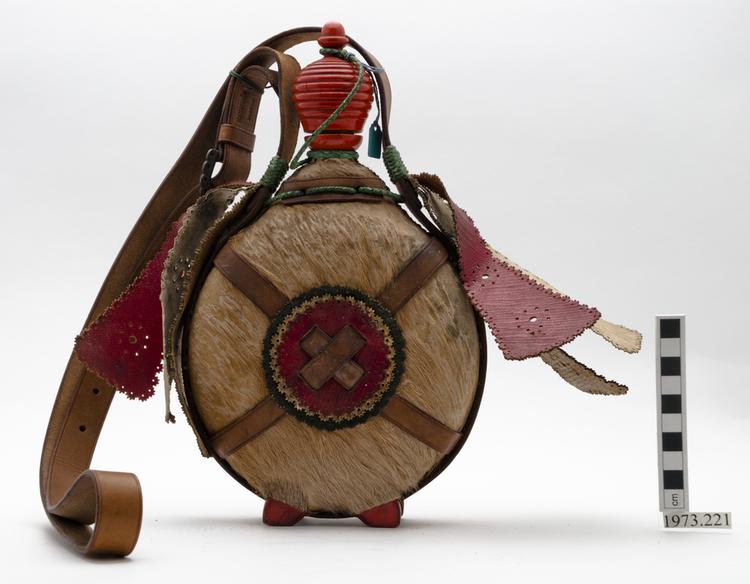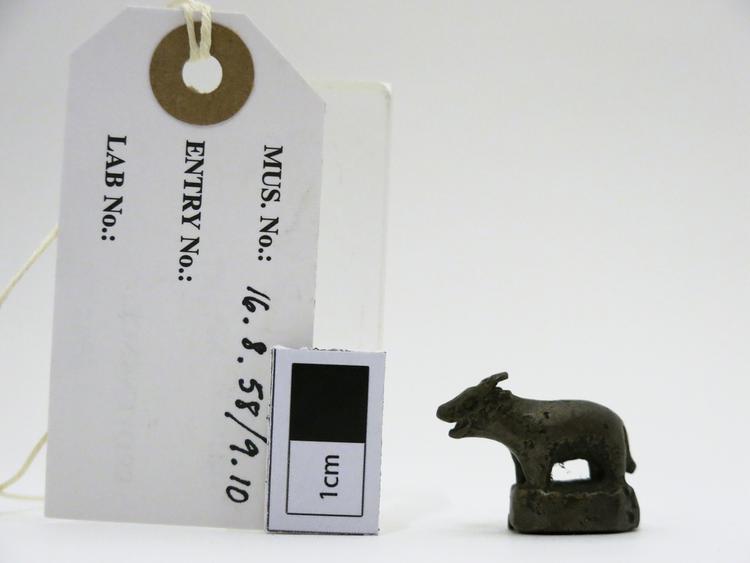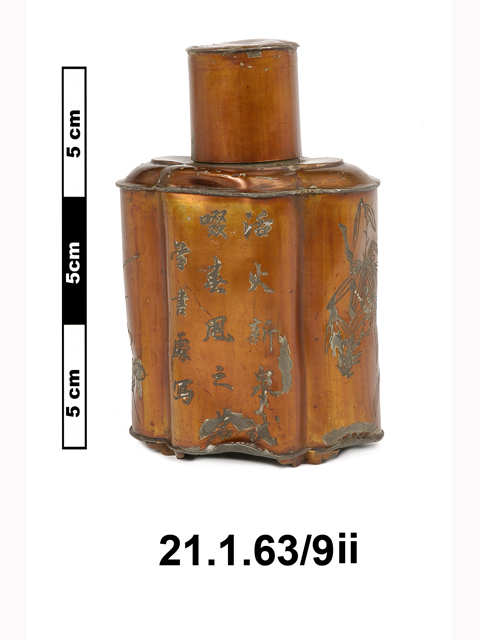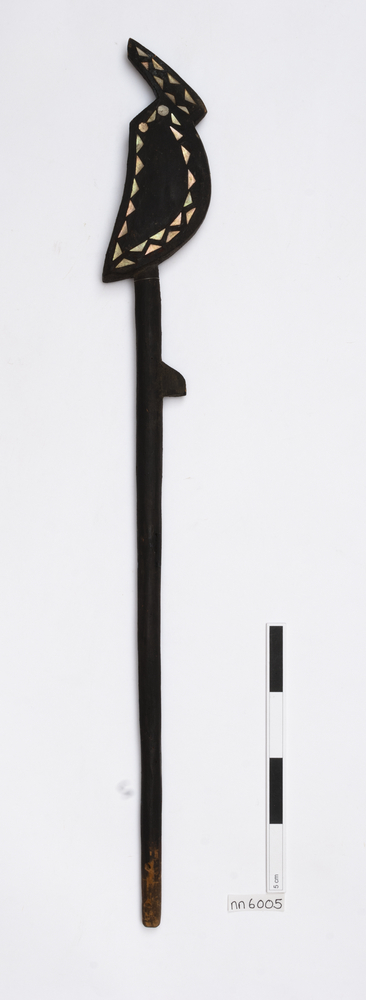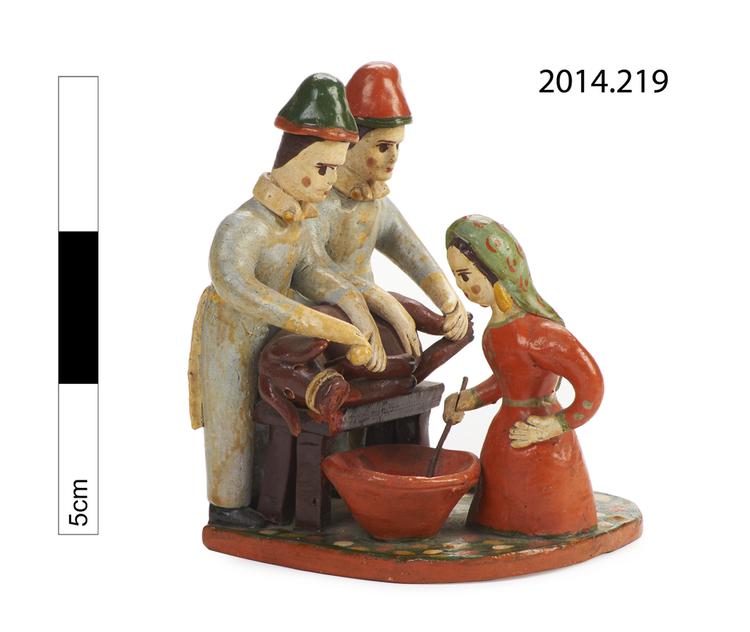
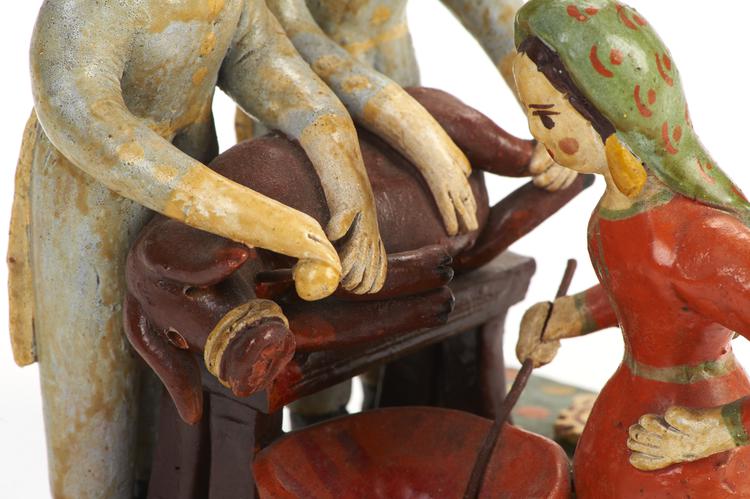

Painted pottery scene in which the blood from a recently slaughtered pig is drained into a bowl, with two men holding the pig and one woman supervising. Head broken off one of the men, but present. Impression on underside of the piece reads: ‘Olaria Alfacinha/Estremoz/Portugal’. This form of the maker's mark can be dated to 1963.
In the maker's mark "Olaria" is the name of the pottery workshop; "Alfacinha" the name of the family who owned it; "Estremoz" is where it was made - a city in the South of Portugal. In the second half of the 19th century, Caetano Augusto da Conceição, who was from Lisbon (thus the nickname "Alfacinha"), moved to Estremoz, got married and lived next door to a pottery workshop, which belonged to José Perninha. He got interested in it, learned from the latter, decided to open his own workshop, brought together several pottery workers and started experimenting with old techniques and models. They created new objects and they are really well known for starting to use naturalistic ornaments. The business thrived, they even won some awards, until 1987, when the workshop was sold. In 1995 it closed. These kind of ceramic figures, such as the draining of blood, are really common across Portugal. They began to be made and put around traditional ceramic Christmas cribs in the 17th and 18th centuries, but they then began to having their own "identity" and be sold as unique pieces. They began to lose their "religious" side and the demand for such rural depictions increased. They would sell these at fairs and markets in nearby cities, such as ÉvoraThese kind of ceramic figures, such as the draining of blood, are really common across Portugal. They began to be made and put around traditional ceramic Christmas cribs in the 17th and 18th centuries, but they then began to having their own "identity" and be sold as unique pieces. They began to lose their "religious" side and the demand for such rural depictions increased. They would sell these at fairs and markets in nearby cities, such as Évora.



